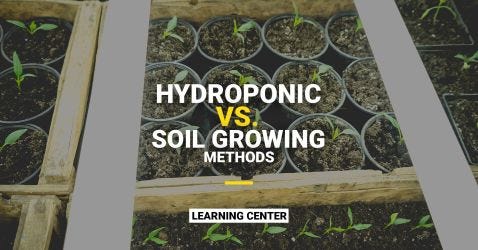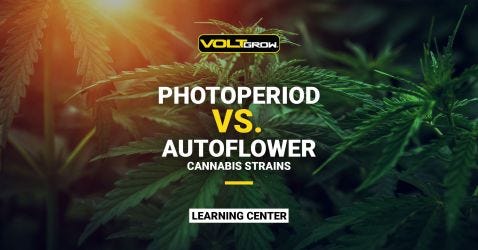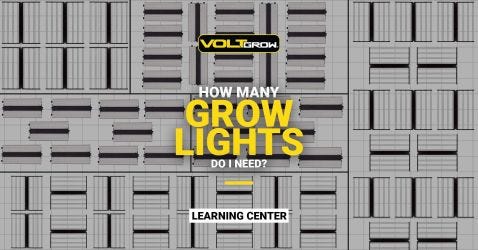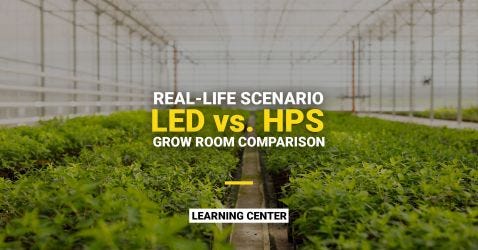LED grow lights are quickly beginning to dominate the industry. However, once growers make the switch and buy LED grow lights, they often forget to take new factors into account. In this article, we will review some common mistakes to avoid when growing with LED grow lights.
Hanging Lights Too High
Many growers who switch to LED lights often hang the lights too high above the canopy. While a 24-30 inch mounting height may be typical for HPS/CMH lights, this is an improper mounting height for LED grow lights. VOLT Grow® LED grow lights are designed to be mounted between 6-12 inches from the canopy for maximum yields. This close proximity is possible because they produce substantially less heat than their HPS counterparts. Additionally, the evenly spaced diodes in our design allow there to be an even light distribution over the grow area, even at these much narrower mounting heights.
You can choose to mount your lights higher during the vegetative stage since the target PPFD is lower, or you can raise them a little if you are looking for a slightly more even distribution of light. The higher you mount your light during flowering, the less light will reach your plants due to absorption in the air and light scattering. So the ideal way to use an LED light is to place it as close as possible to the canopy without burning the plants. In well-ventilated areas, we have found the mounting height to be as close as 6 inches. If you do choose to hang your lights higher than 12 inches, this will be at the cost of losing light density and ultimately yield.
Using Incorrect Light Spectrum
Before investing in any grow light, understanding the light spectrum is vital to understanding what is best for your plants. A grow light should provide a light spectrum that best drives photosynthesis in plants, which can be done by replicating natural sunlight, which is a full spectrum of light wavelengths. While red and blue light is the most well-known for stimulating plant growth, additional wavelengths of light, such as green and yellow, also are used and needed during photosynthesis. To get the most well-rounded growth it is important to get a full spectrum of light that has a combination of all wavelengths and colors. For example, the fact that green light is less easily absorbed by plant cells actually can benefit the plant because instead of the green light being absorbed by the already oversaturated leaves at the top of the canopy, it can penetrate deeper into the plant and deliver light to areas that were otherwise being ignored.
When LEDs first got introduced to the indoor horticulture market, they only produced red and blue lights, making them known as “smurf” or “blurple” lights. While these lights might still get the job done, they are not as high caliber as full-spectrum LED lights and will not produce as high yields or as healthy plants. This gave early LEDs a bad reputation. When switching to LED, it is important to get a fixture that has full-spectrum light and maximizes plant growth. VOLT Grow®’s FL-1 LED Grow Light and VL-1 LED Grow Light both offer full-spectrum light output.

Low-Quality LEDs
LED lights were introduced into the indoor horticulture market much later than HPS/CMH lights, and at first, they could not compete with the high light output. However, advancements in LEDs have evolved in recent years to produce extremely high outputs that not only compete with—but surpass— their HPS counterparts. Unfortunately, many of these poor-quality lights still exist out there and are not capable of producing the high light output required for maximizing plant growth and yield.
To ensure you are getting a high-quality light that will perform adequately, it is important to not only look at the wattage of the fixture, but also the light output (PPF). Wattage only specifies how much power the light uses, but not how much light output it actually produces for the plants, which is the best way of evaluating a light’s effectiveness. Make sure the light is powerful enough to produce an average PPFD of at least 500 µmol/m2/s for the vegetative stage and >900 µmol/m2/s for full-cycle grows and flowering stages— but the higher the output, the better! VOLT Grow®’s 720W FL-1 Full-Cycle LED Grow Light has one of the highest light outputs on the market with a PPF of 2000 µmol/s, or two of our 440W VL-1 Full-Cycle LED Grow Lights together have an incredibly high PPF of 2440 µmol/s.
Overwatering
Another common mistake when switching from HPS/CMH to LED grow lights is overwatering. This is because HPS/CMH lights run much hotter than LEDs, in addition to producing more infrared light, which causes the plants and soil to dry out much faster. This causes the watering routine to be heavier and more frequent than what would be needed under LED lights. When switching to LED, make sure to check your soil and monitor your plants before continuing with the same watering routine.






